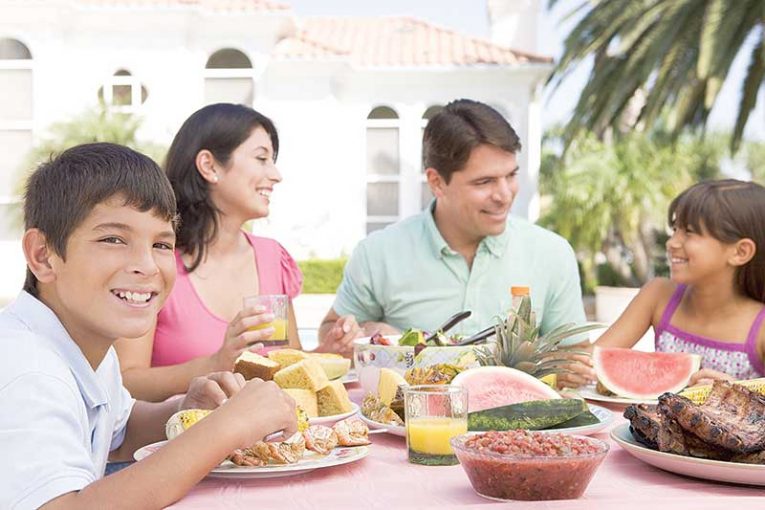How The American Supermarket Can Best Serve Hispanic And Asian Customers

by Harry Blazer/Food industry consultant and former grocer
The Shelby Report asked me to provide some advice to supermarkets regarding how to best serve Asian and Hispanic customers.
First of all, there is a distinction to be made between ethnicity and race. Currently, the United States Census Bureau defines six race categories:
• White or Caucasian
• Black or African American
• American Indian or Alaska Native
• Asian
• Native Hawaiian or Other Pacific Islander
• Some Other Race

So we see right away that while Asian is considered a race, Hispanic is not. Therefore, a person of Hispanic descent is typically defined using both race and ethnicity as an identifier—i.e., Black-Hispanic, White-Hispanic, Asian-Hispanic, Amerindian-Hispanic or “other race” Hispanic. The United States Census uses the ethnonym Hispanic or Latino to refer to “a person of Cuban, Mexican, Puerto Rican, South or Central American, or other Hispanic culture or origin regardless of race.”
Asian can include anyone from Iran to the Philippines. But these categorizations of ethnicity and race, which have found their way into popular language, were designed primarily to track compliance with civil rights laws or for analysis by statisticians at the Census Bureau; they are not necessarily the best ways to categorize and think of your customers.
Naming right
Secondly, I think conventional supermarket operators would benefit by thinking of what has been traditionally referred to as “Ethnic Foods” as “World Foods” (or “Foods of the World” or “Foods from Around the World”)—focusing on the culinary traditions that are associated with specific cultures within nations or regions. So, for example, rather than referring to Latino or Hispanic foods, it would be preferable—and I believe appreciated more—if reference were made to The Foods of Latin America. So even though “Hispanic” broadly refers to the people, nations and cultures that have a historical link to Spain and commonly applies to countries once colonized by Spain in the Americas, today, Latin American cuisines are very different than Spanish and Portuguese cuisines. All “Hispanics” are not created equal when it comes to food traditions—even when it comes to rice and beans. A traditional home-cooked dinner in West Asian Saudi Arabia is quite different than one in East Asian Malaysia.
Latin America consists of 20 sovereign states and several territories and dependencies, which cover an area that stretches from the northern border of Mexico to the southern tip of South America, including the Caribbean. The most commonly accepted boundaries place Asia to the east of the Suez Canal, the Ural River and the Ural Mountains, and south of the Caucasus Mountains and the Caspian and Black Seas. It is bounded on the east by the Pacific Ocean, on the south by the Indian Ocean and on the north by the Arctic Ocean.
Understanding cuisine distinctions
Just imagine the diversity in cuisine between Mexico and Peru, Cuba and Brazil, Jamaica and Argentina. But the differences between Asian cuisines are more dramatic yet. There are six major Asian cuisine categories. For example, the Central Asian cuisine of Afghanistan or Uzbekistan; the East Asian cuisine of China, with its own four major culinary traditions (Cantonese, Sichuan, Shandong, Jiangsu) and its 20-plus major regional cuisines; the South Asian cuisines of India and Pakistan with their own plethora of regional cuisines in addition; and the cuisine of the Middle East (West Asian) to include Lebanese, Israeli, Persian and Turkish, to name a few. Just think about the various styles of barbecue in this country. Or take a minute and look at Wikipedia’s listing of the different kinds of empanadas. Or search for images of Sancocho—a traditional Latin American stew—and see how many different preparations there are.
So, dealing with the diversity and complexity of World Foods in an authentic and convincing manner is beyond the capability of any U.S. conventional supermarket operator. The industry just doesn’t have the food culture, the expertise, the intentionality—or the shelf space.
So what is the plan?
A) Realize that as a rule you will never be able to outdo the well-run local “ethnic” store. They speak the language and in turn have a different relationship with their vendors and their customers. They also know the products firsthand and often buy cheaper and sell cheaper because the store is often a family affair—they don’t follow the same rulebook as conventional supermarkets.
B) Yeah, you can carry some products from Goya, JFC or Patel Brothers. But that won’t get ethnic consumers excited, and maybe not even Anglo-Foodies who want a real and complete cultural shopping experience—at a better price. At least you can carry the 15 or 20 essential grocery items that each major food culture in your marketing area needs. But make sure you have the right brands, at the right price, even if you have to sell them at cost.
C) What unites all food cultures? A love and respect for fresh at a great value—where value is the nexus of price, quality and experience. So get as good as you can at providing the best value in fresh—with particular focus on produce.
D) Great fresh offerings cut across all demographics and ethnicity. And the Latin Americans and Asians, as with all folks with strong food cultures, tend to do much more cooking at home, where eating together as a family is still an important tradition. The “ethnic” customers are potentially your best customers for fresh.
E) Everyone loves a delicious, tree-ripened, sweet, juicy, succulent peach. Or just-picked sweet corn at a great price. So if you are the best value provider at those basics, you will be way ahead of the game (and here Costco comes to mind). But then in addition, you need a good variety of high-quality fruit and vegetables at great prices that make up the food culture’s diet that you are trying to appeal to.
F) At Harry’s Farmers Market in Georgia (which I founded in 1988 and then sold to Whole Foods in 2001), we had 1,200 SKUs of produce. If it grew, we wanted it, and we attracted shoppers from other states because of our quality and selection in fresh. And more than 20 languages were spoken by staff. Dekalb Farmers Market in Decatur Georgia, owned by my brother Robert Blazer, is one of the most successful independents in the country and is a direct importer of all the major Latin American fruits and vegetables. And, in fact, it is a major wholesaler to other stores for these items. Also, Dekalb carries every oriental vegetable that grows in North America and sports the largest seafood department in North America. The store sells no commercial groceries yet is a major attraction for shoppers from food cultures from around the world because of the diversity and value of their fresh offering.
G) Ask the Latin American and Asian folks who work for you where they shop, then go there and look—with them. And while you’re at it, you will learn why they don’t shop with you and perhaps what it would take so they would.
Which of the major conventional operators have been successful at serving certain non-American food cultures?
• H-E-B has learned how to sell to the Mexican customer, in particular, and Latin American customers by extension. But it made a big commitment and investment to acquire that expertise. Years ago H-E-B started a separate Mexican-based division in partnership with a Mexican retailer and then brought those learnings back to Texas, which they integrated into their existing estate and then went on to develop a separate format called Mi Tienda.
• Publix has targeted the second generation and aspirational “Hispanic” shopper and the non-Hispanic foodie in its Sabor stores, where signs and staff are bilingual and Latin American products coexist with traditional conventional offerings. The shopping experience is a major step up from the bodega in the barrio.
• Loblaw wanted to become better at serving the fastest growing ethnic group in Canada— Asians (in particular South and East Asians). When it came to East Asians (Orientals), Loblaw figured out that the quickest and simplest way to get up to speed was to acquire the expertise rather than try to grow it internally. Thus, they bought the best oriental store operator in Canada—T&T Supermarkets.
Whether you decide to partner, acquire or grow the capability internally, having the intention and the expertise to get the ethnic shopper in your market area to take you seriously is now a must. Yes, you will get your share of those shoppers by being the best conventional operator in the area. But if you can raise your game on the fresh side of the store—especially in the quality, price and diversity of your produce offering—you could end up becoming the primary shop for the Latin American, Asian or whichever food culture is in your “’hood”—for produce and then perhaps, beyond.